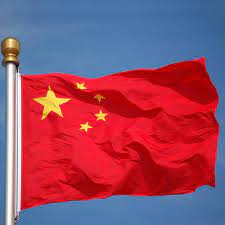Chairman Xi Jinping is doing his uttermost to drag the PLA into the modern era, despite some kicking and screaming. The world's largest military has colossal amounts of old-fashioned equipment in its inventory too, though burgeoning defense budgets each year are going a long way to replace legacy equipment. For example, the 2021 defense budget announced in early March rose to CNY1.355 trillion (USD209.4 billion), equating to a 6.8% increase from last year.
As another example, the PLA Navy has tripled in size in the past two decades, and last year it commissioned more than 25 major combatants. Furthermore, the PLA Rocket Force annually performs more ballistic tests than the rest of the world combined.
Already the PLA is causing far more than ripples of alarm among its nearest neighbors. In fact, its frenetic military modernization is causing tsunamis as distant as the corridors of the Pentagon in Washington DC.
Admiral Philip Davidson, head of the US Indo-Pacific Command (INDOPACOM) headquartered in Hawaii, appeared before the Senate Armed Services Committee on 9 March. He warned of the growing might of China, and Beijing's willingness to use its strength against neighbors and to even threaten the USA itself.
Admiral Davidson testified: "The greatest danger for the United States in this competition is the erosion of conventional deterrence ... Absent a convincing deterrent, the People's Republic of China (PRC) will be emboldened to take action to undermine the rules-based international order and the values represented in our vision for a free and open Indo-Pacific ... The combination of the PRC's military modernization program and willingness to intimidate its neighbors through the use, or threatened use of force, undermines peace, security and prosperity in the region."
This same American commander had admitted in 2019 that the US military had "lost a quantitative advantage, and our qualitative advantage was shrinking across several domains as the PLA fields higher-quality systems".
The INDOPACOM chief added that "Beijing's authoritative messaging has also grown increasingly confrontational" in the Indio-Pacific, a region that represents 60% of the world's GDP. He also highlighted increasing military coercion and intimidation of the democratic nation of Taiwan by the PLA.
With such a powerful and threatening foe, which continues to throw its weight around and encroach into areas where it has no legal entitlement - the latest example is 220 vessels of the Chinese Maritime Militia that had assembled in Whitsun Reef in the exclusive economic zone of the Philippines - it is frightening to consider what an even more modern and emboldened PLA will do in the future.
So, what of China's modernization goals?
Xi stated in October 2017 that the goal is for the PLA to "basically complete national defense and military modernization by 2035" and possess a "world-class military by mid-century" (read 2049, which will be the 100th anniversary of the founding of the modern PRC).
However, China now has added another short-term goal for 2027, inserting it into the country's 14th Five-Year Plan recently approved by the National People's Congress. Buried in Part 16 of that plan is the goal to "ensure the achievement of the 2027 centennial military building goal".
This 2027 goal was first voiced in October 2020 during the 5th Plenum of the 19th Central Committee. Some have been confused by that announcement, thinking that China is accelerating its military modernization, and there was a flurry of news reports to that effect.
However, this is not the case. Authors Brian Hart, Bonnie Glaser and Matthew Funaiole, writing for The Jamestown Foundation think-tank in the USA, explained: "While noteworthy in its own right, the new benchmark is not a sign that China is sprinting to basically complete the modernization of the PLA ahead of the 2035 target set by President Xi Jinping."
They added, "Instead, the 2027 goal is a new short-term marker for ensuring that China's military modernization campaign continues to progress along the Chinese Communist Party's (CCP) long-established roadmap. Importantly, it also serves as a major propaganda tool and a reminder to the international community of China's growing power."
Indeed, the goal is a rather symbolic one, as 2027 marks the 100th anniversary of the establishment of the PLA on 1 August 1927.
China actually has a three-step development strategy to modernize the PLA, even though that plan has evolved gradually over the years. Stage 1 lasted from 1997-2010 to "streamline and reduce the number of military personnel, establish a more efficient structure and acquire advanced equipment and weaponry suitable for combat under high-technology conditions," according to The Jamestown Foundation report.
Stage 2 covered 2010-20 to "utilize growing defense expenditure to significantly enhance the quality of the armed forces through the development of more advanced equipment and weaponry". The third stage continues to "realize modernization of national defense and the armed forces 'by the century's mid-point'".
The first stage included initiatives such as informatization, the application of information technology to improve the military. It also stressed mechanization, and Xi pronounced this process complete towards the end of 2020.
The 2027 benchmark simply represents a modification of the three-step program, rather than a compression of it. Naturally, with the first stage already completed, a new interim step had to be added to maintain the three steps and keep the illusion of progress. The three deadlines are now 2027, 2035 and mid-century.
What does the 2027 PLA modernization target entail then?
In fact, China's Ministry of National Defense (MND) highlighted four key aspects for these coming seven years. MND spokesperson Ren Guoqiang listed them: 1. Accelerating the integrated development of mechanization, informatization and intelligentization; 2. Accelerating the modernization of military doctrine, organizational form, military personnel, weapons and equipment; 3. Adhering to quality first and prioritizing efficiency; and 4. Promoting the simultaneous improvement of national defense strength and economic strength.
The mention of "intelligentization" is important, as it integrates artificial intelligence and new technologies into military platforms and systems. Xi has already achieved remarkable structural reforms in the PLA, and more could well be on the way by 2027. China is also pursuing military-civil fusion, whereby each sector helps and boosts the other. The Pentagon describes this fusion as "a nationwide endeavor that seeks to 'fuse' economic and social development strategies with its security strategies". This fusion has been accelerating, and is one reason why foreign countries like the USA are so concerned at domestic technologies, companies and research being covertly snaffled up and passed to the PLA.
Such "deadlines" are typical of the CCP's rigid, controlling nature. Just as Xi recently declared the country had fulfilled the task of "poverty elimination" by "building a moderately prosperous society in all respects" by 2021, such dates can become meaningless tropes and a mere propaganda ploy. The CCP is able to trumpet success when arbitrary benchmarks are "met", supposedly giving the regime and its figurehead, Xi, legitimacy and prestige.
It is also common for important goals to be timed to coincide with historic anniversaries. Thus, 2027 will mark the end of Xi's third term in office, and possibly the start of his fourth, which would be unprecedented in modern Chinese history. That same year is bound to eulogize the huge successes of father Xi, and his future legacy is bound up in his PLA modernization campaign.
The Jamestown Foundation report concluded: "The goal is also a symbolic message aimed at both domestic and international audiences. At home, it serves as a powerful propaganda device for the CCP and an important tool for shoring up Xi Jinping's legacy. Abroad, it sends a clear message that military modernization remains a pressing and important priority for China's leaders."
To achieve this aspirational but rather vaguely defined modernization goal, the PLA must be able to recruit and retain talented personnel. Past progress has been patchy in this regard, but China is attempting to reform its officer system.
Often, political indoctrination was more important than any military skill or capacity to lead. In January this year, the PLA implemented new regulations that will improve the officer management system, clarify hierarchal relationships between officers, reward high performers, and recruit/retain people with the appropriate skills.
In the Hu Jintao era from 2002-12, corruption and patronage networks reigned supreme in the PLA, so much so that often senior positions were filled by candidates simply able to pay the most for their posts. A major revision of the officer system was introduced in November 2015, but it did not really begin to bite till 2019 because of all the other restructuring that was occurring.
The new system deals with the PLA's unnecessarily complicated dual rank and grade system, of which there are ten and 15 levels respectively. Previously, the grade of a Chinese officer was more important than their rank to determine status, authority, pay and benefits. Because officers typically receive a rank promotion every four years and a grade promotion every three years, mismatches often occur. For example, a lower-ranked officer with high grades could outrank a higher-ranked officer with low grades.
According to Joel Wuthnow and Phillip Saunders in a separate report for The Jamestown Foundation, the recent restructuring of the PLA often left officers commanding units reduced in grade to reflect their new responsibilities. Plus the new three-tiered corps-brigade-battalion structure instead of the former four-tiered corps-division-regiment-battalion structure does not mesh with the existing grade system, leaving division-grade officers with no divisions to command. To rectify this confusing situation, the PLA will now institute a hierarchy based on rank alone, though the grade system will continue to coexist. There is now a 19-tier officer salary and benefits scale that loosely aligns with rank.
The PLA has identified a need for increases in pay and welfare benefits to produce "motivation and vitality" among officers. Indeed, the PLA must compete for recruits against the better-paying private sector. Prior education (for example, a Ph.D would automatically start a candidate at a captain's rank) and experience will also influence their starting rank.
There is a long way to go, however. For instance, the annual salary for a new PLA cyber expert was around CNY84,000 in 2018 (though further bonuses were available for technical skills). However, the same expert could work at Alibaba on a starting salary of CNY50,000 per month.
Wuthnow and Saunders concluded: "Reforms to the officer system may broadly help to clarify hierarchical relations between officers and attract and manage an officer corps better suited to the demands of future warfare. Some of the reforms may also set the stage for more ambitious changes."
However, as long as the PLA remains a force beholden to Xi and the CCP, it is difficult to imagine how it will throw off the stifling shackles of political correctness, party loyalty and a heavily hierarchical system that does not reward initiative or independence. Xi wants a modern and professional military, but there is no way he trusts the PLA to wield that power without his own close control.


















































